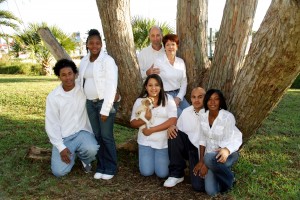Blended Families Underscore the Need for Estate Planning

Anyone with children or modest assets should seriously consider some minimal estate planning, but the increasing number of blended families underscores the need for proper estate planning.
Blended families can involve children from a prior marriage as well as joint children, sometimes joking referred to as “his, hers and theirs.” And blended families involve both younger and older couples, and nearly everyone in between.
When the new spouse is significantly younger, this sometimes means that the older spouse’s children are close in age to the younger. These relationships can cause more than friction between the step-parent and step-children.
Most parents want to ensure that their assets will pass to their children, not their stepchildren. However, absent good estate planning, there is no guarantee that their children will inherit their assets. In fact, if the couple creates common “I love you” wills such that their assets pass to the survivor of them, there is a significant likelihood their children will be totally disinherited.
This is because all of their assets will pass to the surviving spouse to do with as he or she pleases. More often than not this means excluding the stepchildren, who then receive nothing.
The fact that Americans are living longer, and sometimes remarrying much later in life, means that blended family issues come into play there too. A recent USA Today article, titled With more blended families, estate planning gets ugly, highlights some of these issues. (The full article is available online at http://www.usatoday.com/news/parenting-family/story/2012-03-13/With-more-blended-families-estate-planning-gets-ugly/53516094/1?csp=34news.)
As this article states, “[a]dd the gaping generational divide between Depression-era parents, who valued frugality above all else, and their Baby Boomer children, who relish self-reward, and the dynamics can be explosive.”
Thus, baby boomer children expecting an inheritance may have to wait much longer than expected. But perhaps more difficult, who should pay for the cost of the surviving spouse’s care? Should the stepchildren be forced to use their inheritance to pay for an aging step-parent’s care, particularly after only a short-term marriage? Or should this burden fall on the children?
There is no one right answer here, but these questions epitomize the many questions that arise with blended families. These questions should be answered with the help of counsel and proper planning.










